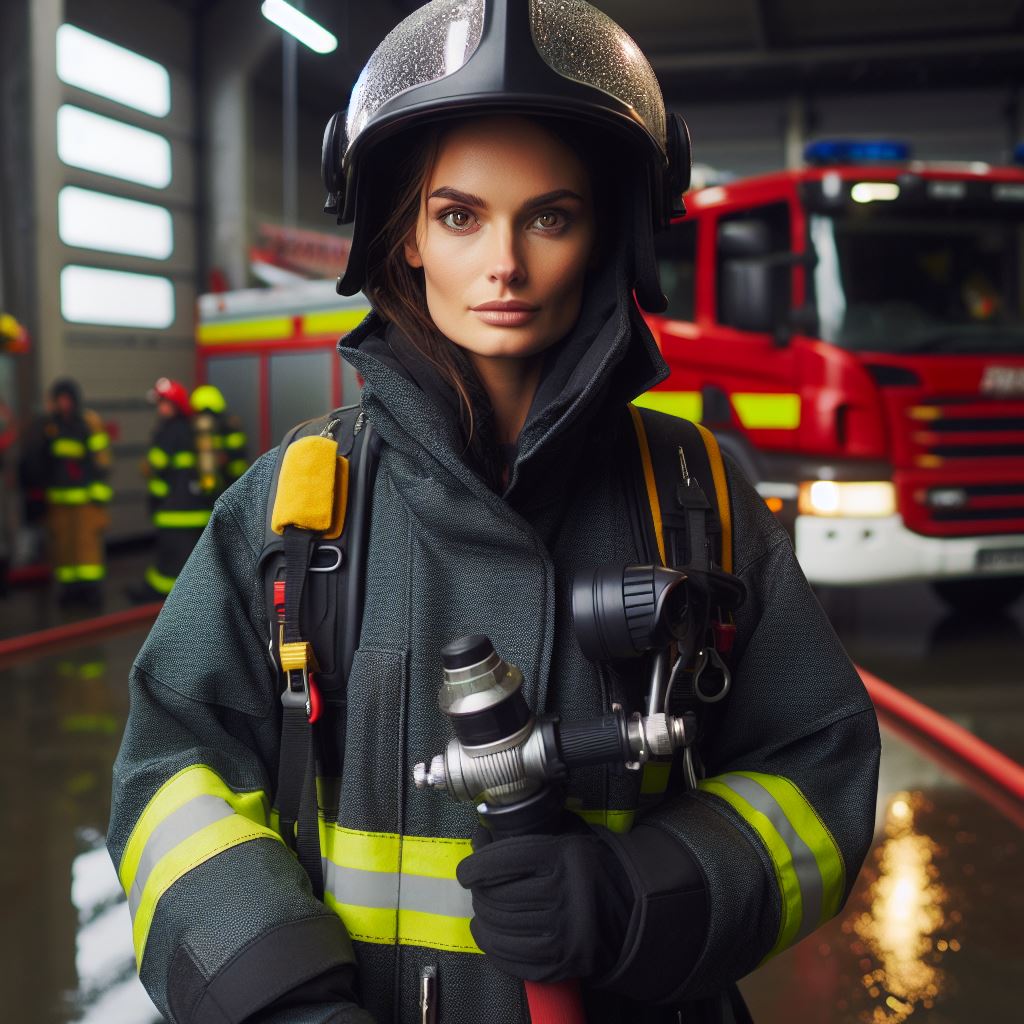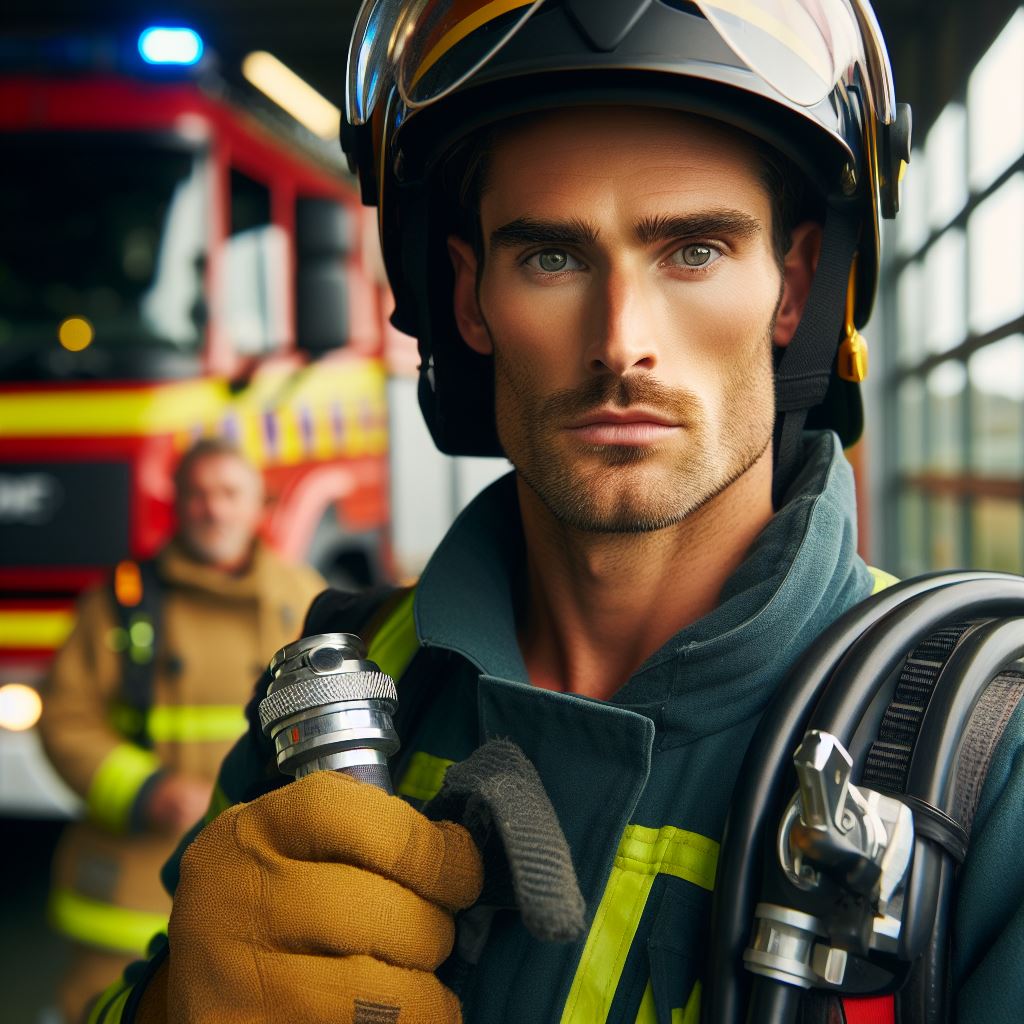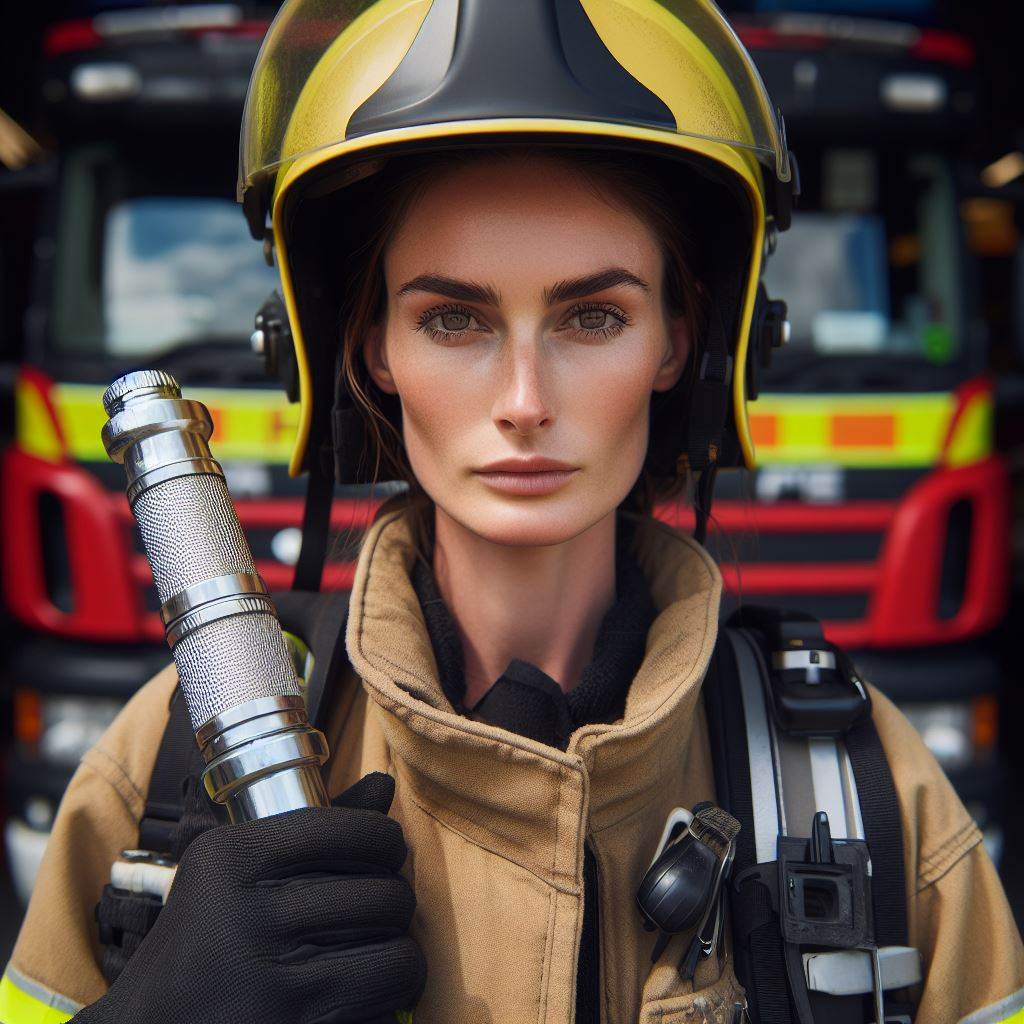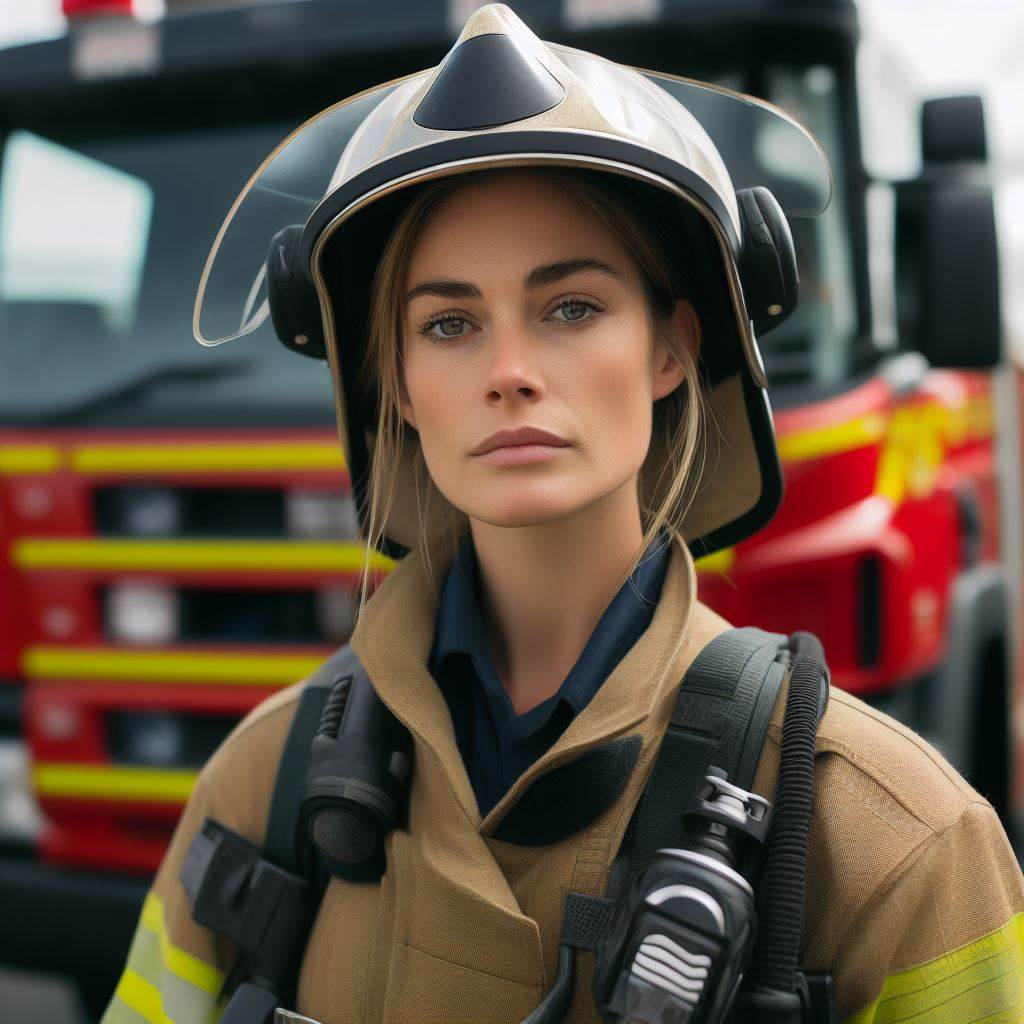Introduction
New Zealand’s Fire Service Hierarchy plays a vital role in ensuring efficient and effective fire response.
It is essential to grasp this hierarchy, whether you are a firefighter or a resident, as it directly impacts emergency management.
At the top of the hierarchy is the New Zealand Fire Service, responsible for overall administration and coordination.
They develop policies and provide strategic direction to regional fire authorities.
Regional fire authorities, in turn, have their own managers and teams responsible for firefighting operations within their specific areas.
These authorities work closely with local communities, conducting fire prevention initiatives and delivering fire safety education.
Fire stations, at the next level, are the backbone of the Fire Service. Here, firefighters are based and ready to respond to emergencies.
Each fire station is led by a station officer, who supervises the crew and ensures the station’s readiness.
Firefighters, the frontline responders, form the core of the hierarchy.
They receive extensive training and are equipped to tackle diverse emergency situations, including fires, rescues, and hazardous materials incidents.
To maintain this hierarchy, there is a separate branch responsible for training, development, and recruitment of firefighters.
They ensure that the personnel are well-prepared to handle the risks associated with firefighting.
In essence, comprehending New Zealand’s Fire Service hierarchy is paramount for effective emergency response.
Whether you’re a firefighter or an ordinary citizen, knowing this structure will promote safety and contribute to a well-coordinated fire service.
Overview of NZ’s Fire Service
A. Brief history of the Fire Service in New Zealand
The New Zealand Fire Service has a rich history that dates back to the 19th century.
Personalized Career Consulting
Unlock your potential with expert career advice tailored to your goals. Get personalized guidance and actionable steps toward your dream career in New Zealand.
Get StartedIn 1861, the first professional fire brigade was established in Wellington.
Initially, fire services were mainly volunteer-based, with firefighters using horse-drawn carts to respond to emergencies.
Over time, as the population grew and cities developed, the need for a centralized fire service became evident.
In 1975, the Fire Service Act was passed, establishing the New Zealand Fire Service as a centralized, national organization.
Since then, the Fire Service has continuously evolved to meet the changing needs of New Zealand’s communities.
Today, the New Zealand Fire Service is known for its professionalism, dedication, and commitment to public safety.
B. Role and responsibilities of the NZ Fire Service
The primary role of the New Zealand Fire Service is to protect life, property, and the environment from the dangers of fire.
Firefighters are responsible for responding to fires, rescuing people in distress, and providing medical assistance.
They also play a crucial role in educating the public about fire safety and prevention.
In addition to firefighting, the Fire Service is equipped to handle hazardous materials incidents, natural disasters, and other emergencies.
They work closely with other emergency services, such as the police and ambulance, to ensure a coordinated and effective response.
Firefighters undergo extensive training to develop the necessary skills and knowledge to handle various emergency situations.
They are equipped with specialized equipment, including fire engines, ladders, breathing apparatus, and hydraulic tools.
Furthermore, the Fire Service conducts regular inspections of buildings and provides advice on fire safety measures.
Transform Your Career with a Professional CV and Cover Letter
Stand out to employers with an ATS-optimized resume and tailored cover letter designed to match your dream role. Let us craft your job application materials for success!
Get StartedThey enforce fire safety regulations and ensure that buildings comply with the necessary standards.
Overall, the NZ Fire Service plays a vital role in maintaining the safety and well-being of New Zealand’s communities.
In fact, the New Zealand Fire Service has a long and distinguished history, dating back to the 19th century.
As a centralized national organization, it is responsible for protecting life, property, and the environment from the dangers posed by fire.
Firefighters have a wide range of responsibilities, from firefighting and rescue operations to education and prevention.
They work closely with other emergency services to provide a coordinated response to emergencies.
The Fire Service also plays a significant role in enforcing fire safety regulations and ensuring the compliance of buildings.
Overall, the NZ Fire Service is an essential institution that safeguards the well-being of communities throughout New Zealand.
Read: Firefighting Gear: A NZ Perspective
Structure of NZ’s Fire Service Hierarchy
A. Rank system within NZ Fire Service
In order to understand the hierarchy within New Zealand’s Fire Service, it is important to familiarize oneself with the rank system in place.
At the top of the hierarchy is the Chief Fire Officer (CFO).
This individual oversees the entire fire service, making crucial decisions and implementing policies.
Next in line is the Deputy Chief Fire Officer (DCFO).
This role supports the CFO and, in their absence, assumes the responsibilities of the CFO.
Boost Your Career with a Standout LinkedIn Profile
Attract recruiters and expand your network with a fully optimized LinkedIn profile tailored to highlight your strengths and professional goals. Let your profile open doors to new opportunities!
Get OptimizedBelow the DCFO is the Station Officer (SO), who is responsible for leading a specific fire station and managing a team of firefighters.
Moving down the hierarchy, we have the Senior Firefighter (SFF).
SFFs have significant experience and play a vital role in fire response and emergency situations.
Lastly, we have the Firefighter (FF), the entry-level position within the New Zealand Fire Service.
FFs receive training and education to effectively respond to fires and other emergencies.
B. Career progression and requirements for each rank
Within this rank system, there is also the opportunity for career progression.
Each rank has its own set of requirements and qualifications that individuals must meet in order to advance.
To become a CFO, individuals must have extensive experience in the fire service, demonstrate leadership skills, and possess the necessary qualifications.
For the role of DCFO, individuals must meet similar requirements to the CFO, including experience, leadership, and qualifications.
Station Officers must demonstrate strong leadership skills, effective management abilities, and have a thorough understanding of fire service operations.
Senior Firefighters require a certain number of years in service, specialized training, and proven capabilities in handling complex fire incidents.
Firefighters, as mentioned, begin at the entry level and undergo extensive training to develop the necessary skills and knowledge to respond to emergencies.
Each rank within the NZ Fire Service hierarchy plays a crucial role in ensuring the safety and well-being of the community.
Effective leadership, training, and experience are key to the success of the fire service and its ability to respond to emergencies promptly and efficiently.
Understanding the structure and career progression within the NZ Fire Service hierarchy not only provides insight into the roles and responsibilities of each rank but also highlights the importance of continuous learning and development for firefighters at all levels.
Read: How to Join NZ’s Firefighting Ranks
Fire Service Management and Administration
A. Fire Service governance and management
The Fire Service governance and management play a crucial role in ensuring effective firefighting operations.
These functions involve strategic planning, resource allocation, and policy development.
Trust boards and management committees oversee the overall governance and management of the Fire Service.
They are responsible for setting policies, budgets, and ensuring that operational objectives are met.
Management teams work closely with operational staff to provide guidance and support.
B. Roles and responsibilities of Fire Service management positions
- Fire Region Manager: The Fire Region Manager is responsible for overseeing multiple districts within a specific geographic region.
- Fire Region Commander: The Fire Region Commander is responsible for coordinating and managing firefighting operations within their designated region.
- District Manager: The District Manager is responsible for overseeing the operations within a specific district.
C. Understanding the chain of command
The chain of command in the Fire Service ensures a clear hierarchy, effective communication, and efficient decision-making.
At the top of the hierarchy is the Fire Region Manager, who oversees multiple districts.
Below the Fire Region Manager is the Fire Region Commander, responsible for coordinating operations within the region.
Lastly, the District Manager is in charge of the operations at the district level.
This clear hierarchy allows for effective delegation, accountability, and coordination during firefighting incidents.
In short, Fire Service management and administration are vital components of maintaining an efficient and effective firefighting system in New Zealand.
Through governance, strategic planning, and operational support, the Fire Service ensures that firefighting operations run smoothly.
The roles and responsibilities of different management positions, such as the Fire Region Manager, Fire Region Commander, and District Manager, help establish a clear chain of command.
This chain of command ensures effective communication and decision-making during emergencies.
Overall, understanding the Fire Service hierarchy and management structure is essential to appreciate the organization’s efforts in keeping New Zealand safe from fires.
Read: Day in a Life of a Kiwi Firefighter

Operational Roles within the Fire Service
A. Frontline roles
Frontline roles within the Fire Service involve individuals who directly face emergencies and provide immediate assistance and support.
On the other hand, support roles focus on prevention, investigation, and ensuring compliance with safety protocols.
The incident controller, as the highest-ranking operational role, plays a critical role in emergency management.
They take charge of the scene, assess the situation, coordinate resources, and make strategic decisions to mitigate the incident’s impact.
Their leadership skills and ability to communicate effectively under pressure are paramount.
Crew managers are responsible for supervising firefighting teams during operations.
They ensure that assigned tasks are carried out efficiently and safely, provide guidance and support to team members, and report the progress and challenges to the incident controller.
Their role is crucial in maintaining effective teamwork and coordination during emergencies.
Firefighters, often considered the heroes of emergency response, are the ones who directly combat fires, conduct rescues, and provide medical assistance.
Their physical fitness, training, and ability to remain calm under pressure are essential in carrying out their tasks effectively.
They work closely with crew managers and follow their instructions to ensure a synchronized approach.
B. Support roles
Support roles within the Fire Service are equally important in preventing and investigating fires.
Fire safety officers are responsible for ensuring compliance with fire safety regulations and conducting regular inspections of public buildings and facilities.
They also provide education and training to raise awareness about fire safety among the general public and promote safe practices.
Fire investigators have the crucial task of determining the cause and origin of fires.
By analyzing evidence, examining scenes, and employing forensic techniques, they play a crucial role in identifying potential arson cases and improving fire prevention measures.
Their findings are an instrumental part of legal proceedings and assist in preventing future incidents.
Overall, the operational roles within the New Zealand Fire Service work together in a hierarchical structure to ensure public safety during emergencies.
The frontline roles directly respond to incidents, while the support roles focus on prevention, investigation, and education.
Each role is vital, and their collaboration is essential for an effective and efficient emergency response system.
Read: NZ Firefighters: Skills and Training Guide
Collaboration with Other Emergency Services
In order to effectively respond to emergencies, the New Zealand Fire Service collaborates closely with other emergency services such as the Police and Ambulance services.
A. Cooperation between Fire Service, Police, and Ambulance services
The Fire Service, Police, and Ambulance services work together in a coordinated manner during emergencies to ensure the safety and well-being of the public.
This collaboration involves sharing information, resources, and expertise to provide the best possible response.
The Fire Service often works in close coordination with the Police, especially in situations where law enforcement support is required.
Similarly, the Ambulance services collaborate with the Fire Service to provide medical assistance and support during emergencies.
By working together, these emergency services can efficiently and effectively manage a wide range of emergency situations.
B. Common scenarios that require inter-agency coordination
There are various scenarios where inter-agency coordination becomes crucial for a successful emergency response:
- Major accidents or disasters: In the event of major accidents or disasters, such as earthquakes or floods, all emergency services must work in close collaboration to provide immediate assistance to affected individuals and communities.
- Search and rescue operations: When conducting search and rescue operations, the Fire Service often partners with the Police and other agencies to locate missing individuals or provide assistance in hazardous situations.
- Crime scenes: In situations involving crimes or suspicious activities, the Fire Service may work alongside the Police to ensure the safety of both responders and the public, as well as to provide support in investigations if required.
- Medical emergencies: The Fire Service and Ambulance services closely cooperate when responding to medical emergencies, particularly in situations where immediate medical assistance is needed, such as cardiac arrests or severe injuries.
- Hazardous material incidents: Instances involving hazardous materials require collaboration between emergency services to contain and mitigate the risks associated with such incidents.
- Public events and gatherings: During large-scale public events or gatherings, the Fire Service, Police, and Ambulance services work together to ensure crowd safety, manage traffic, and promptly respond to any emergencies that may arise.
- Training exercises: Collaborative training exercises involving multiple emergency services help in enhancing coordination, communication, and response skills to better handle real-life situations.
In general, collaboration between the New Zealand Fire Service, Police, and Ambulance services is essential for effectively responding to emergencies, ensuring public safety, and minimizing the impact of various incidents.
By working together, these emergency services can utilize their strengths and expertise to provide comprehensive and efficient emergency response and support.
Professional Development and Training
A. Importance of ongoing training and professional development
Continuous training and professional development are crucial for firefighters to stay updated with new techniques and skills.
Ongoing training helps firefighters improve their effectiveness in handling emergencies and protecting lives and property.
Regular training sessions enable firefighters to enhance their knowledge of safety protocols and the latest equipment.
Professional development allows firefighters to expand their skill set and take on more responsibilities within the Fire Service.
Training provides firefighters with the necessary experience to handle various scenarios and adapt to unpredictable situations.
By constantly learning, firefighters maintain their readiness to face any challenges in their line of duty.
Regular training also helps firefighters work cohesively as a team and develop strong communication skills.
Through training, firefighters understand the importance of accountability and following established procedures.
Continuous development ensures that firefighters stay updated with advancements in technology and firefighting techniques.
By investing in professional development, firefighters become more confident and efficient in their roles.
B. Opportunities for advancement and specialized training within the Fire Service
Firefighters can progress in their careers by taking on leadership roles, such as becoming a station officer.
Specialized training programs allow firefighters to specialize in areas like hazardous materials response, technical rescue, or firefighting aviation.
Advanced training opportunities provide firefighters with detailed knowledge and skill sets to handle complex situations.
Firefighters can engage in continuous education programs or professional courses to further enhance their expertise.
Becoming a fire investigator or fire inspector offers firefighters the chance to specialize in fire cause determination and prevention.
Promising firefighters may also pursue higher education in fields such as fire science or emergency management.
By obtaining additional certifications, firefighters increase their chances of promotion to higher ranks.
Training for specialized equipment operation, such as aerial ladder or hazardous materials response, opens up unique career paths.
Firefighters can attend conferences and workshops to network, learn from experts, and discover new approaches to fire service.
Through a variety of training opportunities, firefighters can expand their knowledge and contribute to the Fire Service’s continuous improvement.
Professional development and ongoing training are vital pillars of the Fire Service hierarchy in New Zealand.
Firefighters must continuously update their skills and knowledge through training programs.
The Fire Service offers various opportunities for advancement and specialized training, enabling firefighters to grow professionally and assume higher responsibilities.
By investing in their development, firefighters strengthen their abilities to protect lives and property efficiently.
Conclusion
A. Recap of the Fire Service Hierarchy in NZ
In the scorching symphony of emergency response, New Zealand’s Fire Service hierarchy orchestrates a seamless dance of skill and dedication.
At the forefront stand Firefighters, the unsung heroes battling flames with unmatched courage.
Above them, Station Officers coordinate operations, ensuring precision in every firefighting maneuver.
District Officers play a pivotal role, orchestrating strategies and managing resources across multiple stations.
Divisional Commanders oversee the broader picture, synchronizing efforts in a choreography of expertise.
At the zenith, the National Commander shapes the nation’s firefighting narrative, setting standards and steering the course of the entire fleet.
B. Importance of Understanding the Hierarchy for Career Planning or Public Awareness
Navigating the Fire Service hierarchy is paramount for aspiring firefighters.
Grasping the ranks paves a clear path for career progression, guiding individuals towards their desired roles.
It is a roadmap illuminating the steps from a recruit’s first flame encounter to the commanding heights of leadership.
Beyond personal aspirations, public awareness of the hierarchy fosters a deeper connection between communities and their firefighting guardians.
Knowing the chain of command instills confidence in the public, assuring them that a well-organized force stands ready to protect and serve.
Understanding the hierarchy isn’t just about titles; it’s about comprehending the intricate web of responsibilities each rank shoulders.
It’s recognizing that every link in the chain is indispensable, contributing to the collective strength of the firefighting force.
Deciphering New Zealand’s Fire Service hierarchy is both a career compass and a public empowerment tool.
As the curtain falls on this exploration, may the knowledge of this structured order ignite not just flames of safety but also a passion for a unified and resilient firefighting community.




